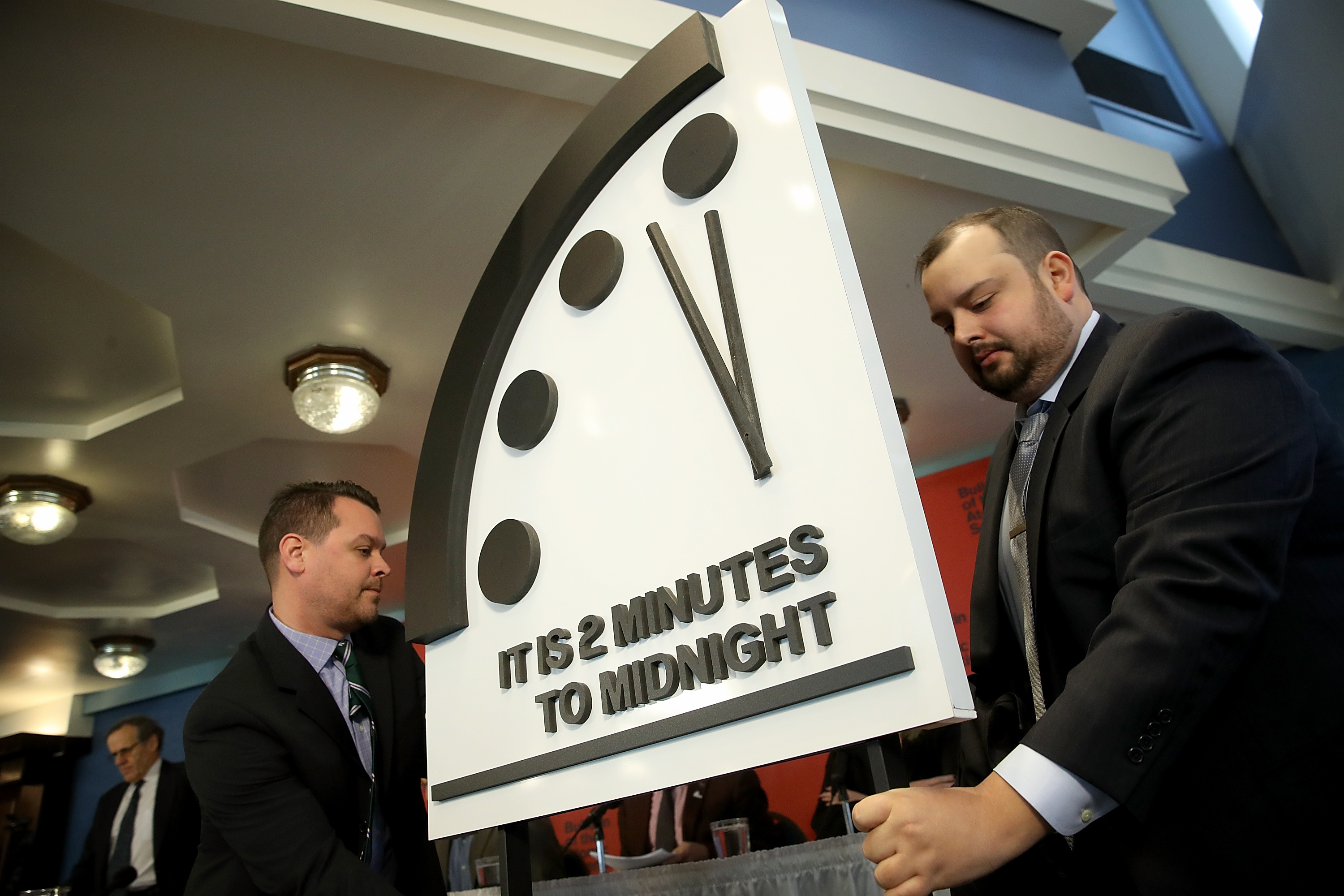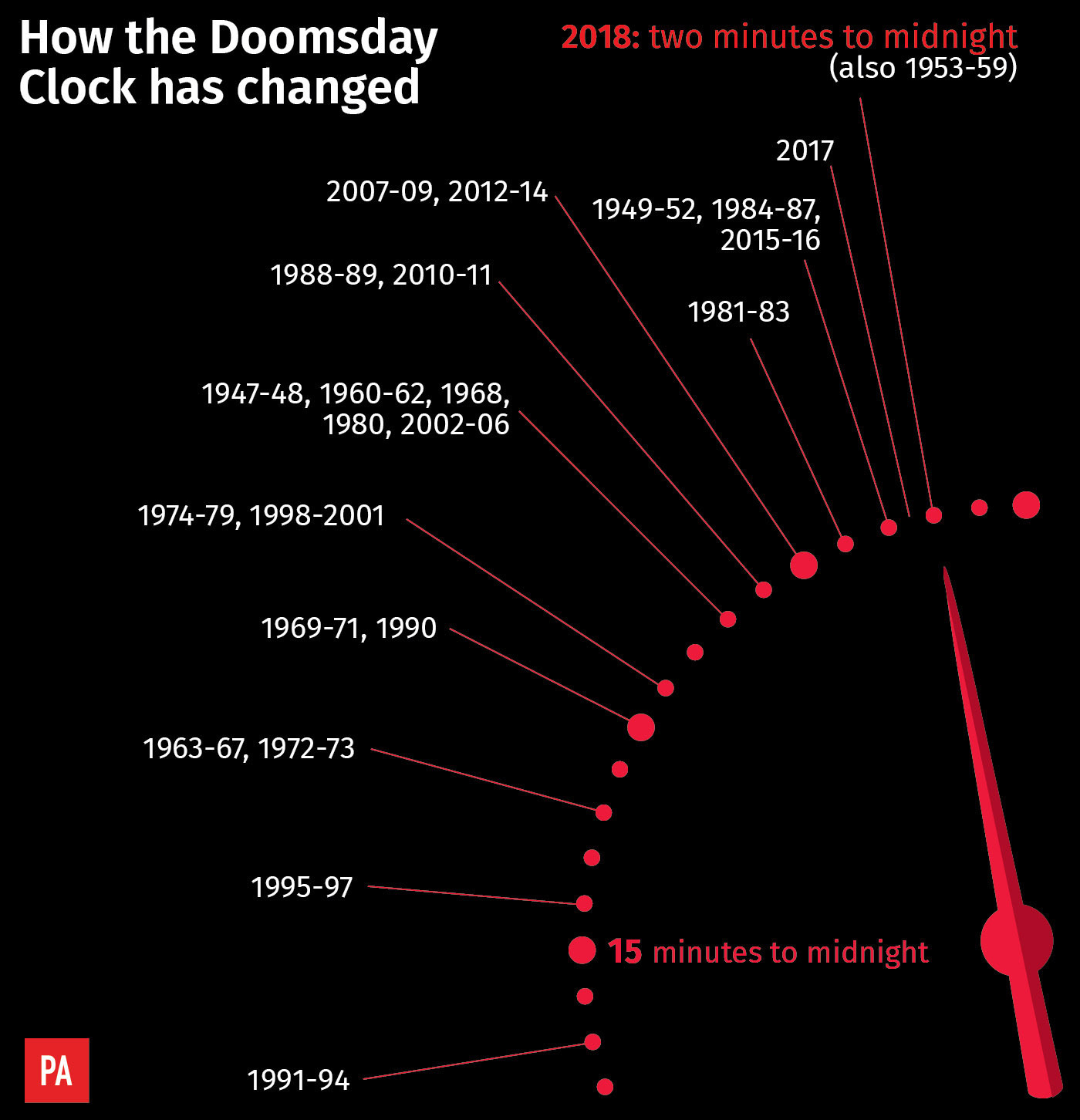
NUCLEAR risks and climate change dangers have resulted in the Doomsday Clock advancing closer to midnight.
It’s the closest to the symbolic point of annihilation that it has been since 1953, during the Cold War.
The Bulletin Of The Atomic Scientists, a group of experts formed in 1945, calculate the time by considering the likelihood of nuclear Armageddon.
They also bear in mind other emerging threats such as climate change and advances in biotechnology and artificial intelligence.

The statement explaining the resetting of the time of the Doomsday Clock notes: “In 2017, world leaders failed to respond effectively to the looming threats of nuclear war and climate change, making the world security situation more dangerous than it was a year ago—and as dangerous as it has been since World War II.
“The greatest risks last year arose in the nuclear realm. North Korea’s nuclear weapons program appeared to make remarkable progress in 2017, increasing risks for itself, other countries in the region, and the United States. Hyperbolic rhetoric and provocative actions on both sides have increased the possibility of nuclear war by accident or miscalculation
“On the climate change front, the danger may seem less immediate, but avoiding catastrophic temperature increases in the long run requires urgent attention now.
“The nations of the world will have to significantly decrease their greenhouse gas emissions to keep climate risks manageable, and so far, the global response has fallen far short of meeting this challenge.”
In January 2017, the Doomsday Clock’s minute hand edged forward by 30 seconds, to two and half minutes before midnight.
For the first time, the Doomsday Clock was influenced by statements from an incoming U.S. President, Donald Trump, regarding the proliferation and the prospect of actually using nuclear weapons, as well as statements made in opposition to U.S. commitments regarding climate change.
The President and CEO Rachel Bronson said: “The year just past proved perilous and chaotic, a year in which many of the risks foreshadowed in our last Clock statement came into full relief.
“In 2017, we saw reckless language in the nuclear realm heat up already dangerous situations and re-learned that minimizing evidence-based assessments regarding climate and other global challenges does not lead to better public policies.
“It is urgent that, collectively, we put in the work necessary to produce a 2019 Clock statement that rewinds the Doomsday Clock. Get engaged, get involved, and help create that future. The time is now.”

Enjoy the convenience of having The Sunday Post delivered as a digital ePaper straight to your smartphone, tablet or computer.
Subscribe for only £5.49 a month and enjoy all the benefits of the printed paper as a digital replica.
Subscribe